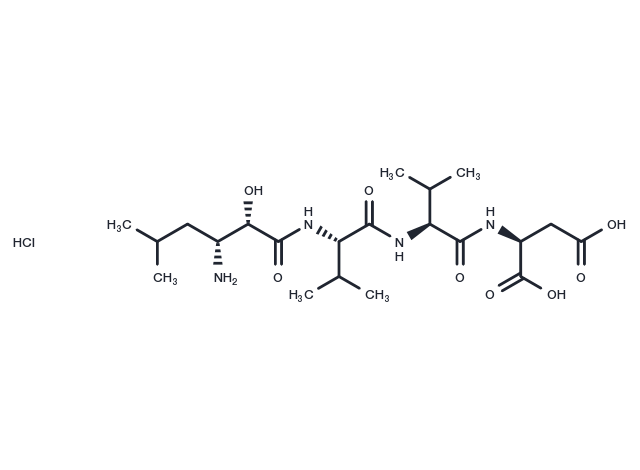Powder: -20°C for 3 years | In solvent: -80°C for 1 year


Amastatin HCl is an inhibitor of aminopeptidase. It also induces vasoconstriction.

| Pack Size | Availability | Price/USD | Quantity |
|---|---|---|---|
| 500 μg | 35 days | $ 83.00 | |
| 1 mg | 35 days | $ 150.00 | |
| 5 mg | 35 days | $ 475.00 | |
| 10 mg | 35 days | $ 870.00 |
| Description | Amastatin HCl is an inhibitor of aminopeptidase. It also induces vasoconstriction. |
| Synonyms | BIMI-1803, Amastatin HCl, ZX-AFC000547, ZXAFC000547, BIMI1803, J-000280, J000280 |
| Molecular Weight | 511.01 |
| Formula | C21H39ClN4O8 |
| CAS No. | 100938-10-1 |
Powder: -20°C for 3 years | In solvent: -80°C for 1 year
DMSO: Soluble
You can also refer to dose conversion for different animals. More
bottom
Please see Inhibitor Handling Instructions for more frequently ask questions. Topics include: how to prepare stock solutions, how to store products, and cautions on cell-based assays & animal experiments, etc.
Amastatin hydrochloride 100938-10-1 ZX-AFC-000547 Amastatin Hydrochloride BIMI 1803 BIMI-1803 Amastatin HCl ZX-AFC000547 ZXAFC 000547 ZXAFC000547 BIMI1803 J-000280 ZX-AFC 000547 J 000280 ZXAFC-000547 J000280 inhibitor inhibit
